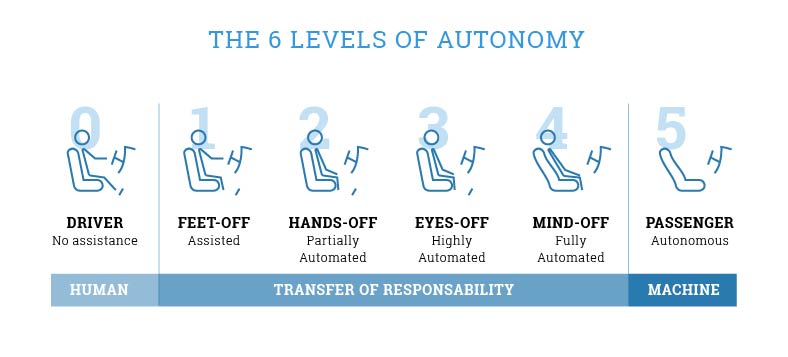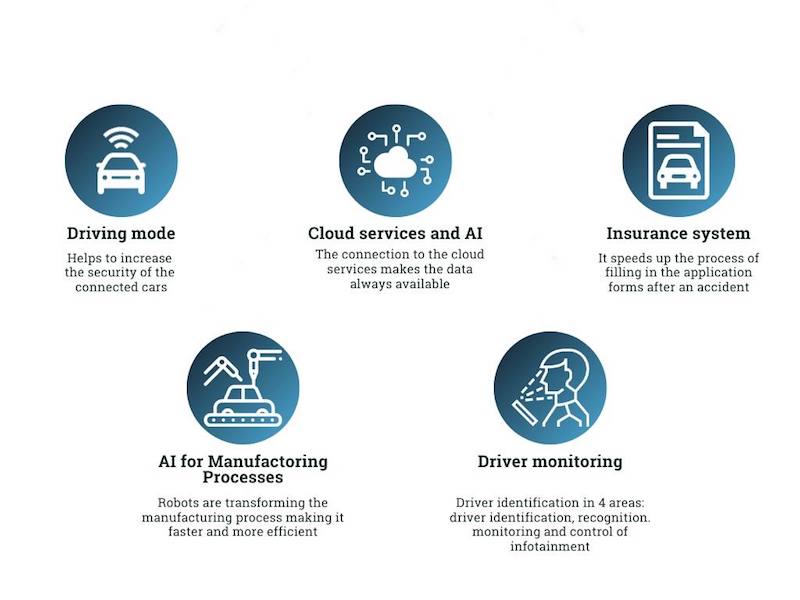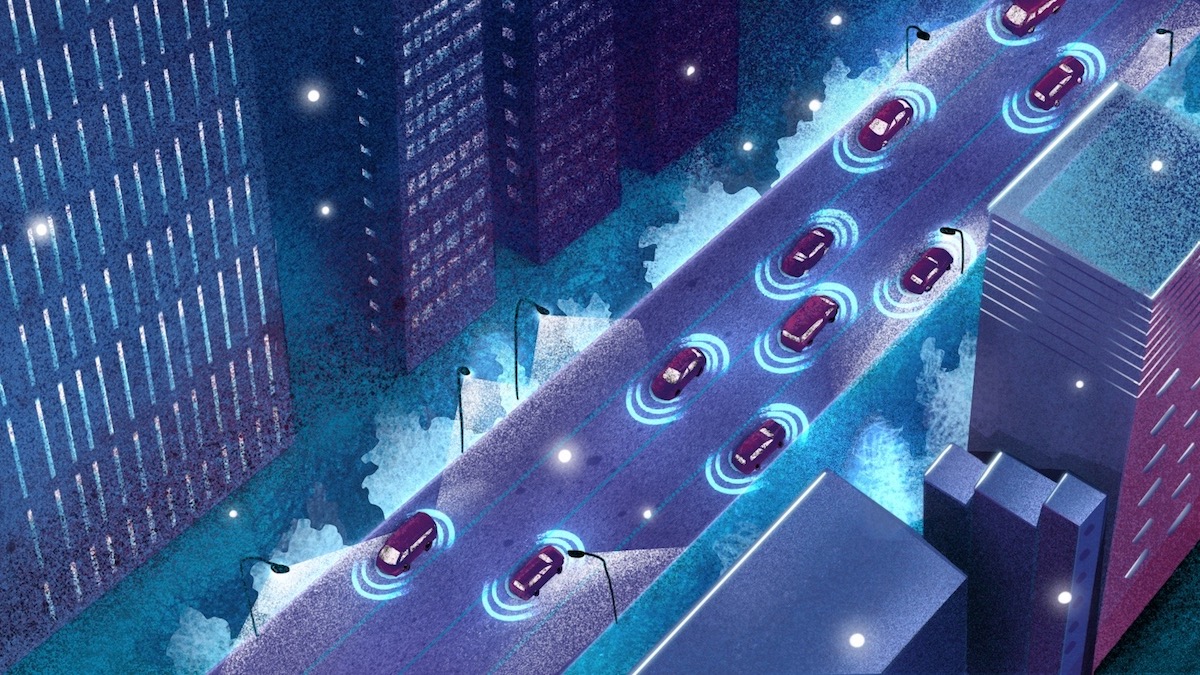The first promo of the television series “Automan” was first aired in Italy back in 1984 and in that first episode there is a super fast and silent hologram-car. The same year, in another cult tv series known as “Knight Rider”, the main character is KITT, a talking car with complete autonomy of self-driving and thinking which is able to talk with Michal Knight, his trustworthy driver.
In that specific year the general though was “That looks like such an impossible future”. Well, in a very short amount of time all this will be actually becoming the reality!
There are cars out there able to deliver shopping autonomously or driverless taxis that you can call by just using an app on your phone. In Arizona, tests for Nuro (a start-up specialized in robotics) have already started to take place, together with tests for Waymo for Google. These are both real examples of a very near future in the automotive industry.
However, in such a competitive market which has a wide public scrutinizing it with a very skeptical eye – especially after the echo of incidents caused by driverless cars – the adoption on a global scale seems more far away than ever. To reach a totally autonomous management of the journeys, developing the tech structure of the cars is not enough. Urban spaces needs to be redeveloped too together with a revision of laws and the reduction of IT risks. All this involves some further thoughts on new ethical responsibility parameters from both a legal and a civil point of view.
The 6 Levels of autonomy in a car
Self-driving is one of the most challenging things that the automotive market has been facing in the last few years. Recently we have seen highly hi-tech cars to appear on the market which can make decisions in fractions of seconds.
La SAE International – Society of Automotive Engineers ha definito sei livelli, in una scala da 0 a 5, di autonomia che si basano sul crescente grado di automazione dell’auto e sul decrescente grado di intervento umano alla guida del veicolo.
SAE International (Society of Automotive Engineers) has six levels of autonomy, in a scale from 0 to 5. They are based on the growing degree of automation in the vehicle and on the decreasing degree of human intervention whilst driving the vehicle

LEVEL 0: COMPLETE ABSENCE OF AUTONOMY
The human being is the only one making decisions whilst driving and there are no options for technological systems to be in control of the car.
LEVEL 1: ASSISTED DRIVING
The human being makes decisions and the car is supporting him/her with security systems and sensors.
The level can also be applied to machines with lane keep assist sensors, speed control and autonomous cruise control systems. There are also other sensors which warn the driver in case of dangerous conditions.
LEVEL 2: SEMI-AUTOMATIC DRIVE
The concept of autonomy is introduced. The driver manages the direction of the car and has ownership whilst in traffic situations. The cars which belong to this level have, on top of the systems already mentioned, a complete ADAS system – Advanced Driver Assistance System (rain sensing windshield wipers, auto-light sensor, lane departure warning or the automatic recognition of road signals, etc).
LEVEL 3: EYES-OFF AUTOMATION
The vehicle can drive itself having control over acceleration, halt and direction whilst the human intervention is only needed in problematic situations or in those cases where self- driving is not permitted. The driver’s only responsibility is to monitor the traffic situation whilst being ready to intervene if asked or in case of difficult situations.
LEVEL 4: MIND-OFF AUTOMATION
The vehicle is completely autonomous in typical traffic situations or urban and suburban scenarios with total control for speed, halt, direction and traffic management.
The person in the vehicle can resume total control of the car when needed or in specific situations.
LEVEL 5: TOTAL AUTONOMY
The vehicle never needs human intervention and the driver becomes a completely disinterested passenger.
The car, in complete autonomy, identifies the itinerary to follow, it chooses which directions to follow, it increases the speed or reduces it according to the traffic and it determines which decisions to make when abnormal situations arise.
This last level is still a long and medium-term objective. Technologies which operate cars still have many difficulties in analyzing all the different options whilst in motion and, at the same time, new regulations and modernization of the current infrastructure are deeply needed.
To reach the longed-for level 5, the key players in the automotive industry are continuing to develop new solutions through Artificial Intelligence (with a big focus on Machine Learning) and IoT. These are the real main characters of the human-machine system revolution.
Artificial Intelligence has been widely applied in the automotive industry in the last five years and it continues to improve with applications which not only have an impact on the vehicle but also on the entire productive process.
Some fields where Artificial Intelligence can be used
Whilst some realities are still working quite extensively on the fifth level of self-driving there is a relevant growth in the number of manufacturers which are developing Artificial Intelligence services which are an extra help to the driver (for example: systems which prevent accidents or alerts when pedestrians or cyclists are in proximity of the vehicle).

There are different fields of applying such systems and we have identified 5 which are being noticed extensively by car manufacturers.
- Driving mode
Amongst all the different AI applications we find assisted driving and its evolution: self-driving.
Assisted driving encompasses all those mechanisms which help the driver to drive in a safer way: a fundamental step to reach the version in which the driver can find complete autonomy.
Amongst all the different features of such systems there is an important one which allows you to reach a certain level of security through sensors which help Artificial Intelligence in identifying dangerous situations and to react accordingly.
The information Artificial Intelligence gathers during the cruise are vital to feed its “brain” allowing it to learn more and become autonomous whilst cruising. - Cloud Services
The application of Artificial Intelligence cloud platforms allows data and information to be very useful for both the driver and the car manufacturers. Preventive maintenance can be planned thanks to Artificial Intelligence monitoring thousands of data per second, understanding and highlighting very small differences that might suggest a possible breakdown before it actually takes place. - Insurance system
The insurance world and AI have a common element since they both spend a lot of time in trying to understand and foresee the future.
It doesn’t come as a surprise that most insurance companies are in total favor of such technology for vehicles as they can evaluate risks in real time. Furthermore, having the data used by Artificial Intelligence helps to speed up the process of presenting possible claims in cases of accidents, something that drivers are very keen on. - Automotive production
Let’s try to shift our focus from the inside of the car to the actual production and creation of the vehicle. Robots have played a fundamental part in the supply chain since the ‘60s but Artificial Intelligence has now raised the bar, transforming them into real helpers.
For example, at the beginning of 2018 Kia Motors started a partnership with Hynday Vest Exoskeleton (H-VEX) to develop industrial and wearable robots for the supply chain workers. Such “collaborative” robots have Artificial Intelligence which learns how to adapt the body movements of the worker to make sure the “human guests” are not harmed in the process.
Another interesting example is the use of self-driving vehicles for sorting materials inside warehouses and production plants. Having Artificial Intelligence in vehicles allows the identification of objects along the way making sure a new route is constantly evaluated. - Driver Monitoring
Artificial Intelligence can ben implemented in cars also to make sure the driver is monitored, evaluating the behaviour in four different specific areas:
Identification: the software understands if the real owner of the vehicle is the person inside the car.
Recognition: through algorithms for facial recognition, the system can automatically adjust the seats, the mirrors and the temperature, depending on which family member is actually driving the vehicle in that specific moment.
Monitoring: Artificial Intelligence, just by examining the driver’s eyes, eyelids and the movement of the head, can track distraction movements or moments of sleepiness in the driver and wake him up or alert him about paying more attention to the surroundings.
Infotainment management: the system allows the control of multimedia systems through the recognition of specific hand gestures, allowing the driver to not take the focus away from the road.
Internet of Things – Hardware Systems for the Smart Cars
In the last few years the automotive industry has been investing a lot of resources not just in AI but also in finding new connected and efficient solutions. We are referring to some technological developments introduced by Internet Of Things mainly used for security and driving comfort.
When we talk about the connected objects in the automotive sector, we are taking into considerations those hardware devices which modern cars have and they allow people to have an easy access to information about the vehicle. An example could be those tools which register the health of the driver and which stop the car immediately if those parameters are different.
Another functionality which is liked by drivers is the one of having hardware drives connected to cameras – a fundamental help whilst drivers are parking or reversing.
IoT hardwares will become fundamental to support Artificial Intelligence in giving self-driving cars a level of security that can overlook moments of distraction or wrong decisions made by the driver. We are specifically referring to ultrasonic sensors with 360° visibility and a span of 250 meters which are able to “see” through heavy rain, fog, dust and even cars.
The security systems mentioned so far are able to “look” at different directions simultaneously, covering blind spots and reaching wave lengths that human senses are not able to hear offering a vision of the surrounding reality which the driver couldn’t have otherwise.
Conclusion
The “sci-fi” future is really starting to happen and self-driving cars will become a part of our daily life in a not far-away future.
Today, the different experiments on self-driving and connected cars are the strong point of Industry 4.0. To put on the market self-driving smart cars, car manufacturers have understood that they need to create new partnerships and collaborations with the giants of digital economy and Hi-tech.
We are witnessing a global and radical transformation which is looking at all the different areas of all players: producers, big car manufacturers, insurance companies, resellers, financial investors, maintenance technicians, energy providers and town planners. All of them need to make an effort and work hard in defining challenging investment plans, aggregation processes, mergers and acquisitions which are now changing the aspect of the whole sector.
You might also like:
A new life for used vehicles with long-term rental
Top 7 trends in the car leasing market in 2019
E-Mobility: the opinion of an expert



